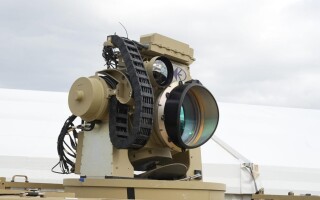Case study: Vigilant and alert ? Emergency notification system deployed for force protection at Baghdad's Camp Slayer
StoryOctober 15, 2008
Camp Slayer in Baghdad, Iraq, lies in what the U.S. Army refers to as a "theater of operations." This somewhat innocuous phrase obscures the volatile nature of an area that exists under a constant spectrum of wartime threats.
Multi-National Force-Iraq personnel living and working at Camp Slayer must constantly be on guard for unpredictable and random attacks by an adversary adept at hit-and-run tactics. Vigilance is key. Being alerted to threats in time to take appropriate action means lives saved, injuries avoided, and facilities protected.
At Camp Slayer, the task of emergency notification is done by AtHoc's IWSAlerts. IWSAlerts is a network-centric, emergency notification system that rapidly communicates to personnel through a wide range of communication channels and delivery devices. The alerting system is deployed at Camp Slayer primarily for force protection purposes to notify of changes in the defensive posture of the camp.
When a threat has been identified, authorized personnel at the Area Defense Operations Center (ADOC) can trigger alerting scenarios using IWSAlerts, which manages the entire alerting process. Emergency alerts appear on computers as intrusive audio/visual desktop alerts. The alert notification system controls notification, scenarios, permissions, user contact information, and alert tracking. Typically, the alerts notify personnel to put on Kevlar helmets or individual body armor due to enemy activity in the area. The alert includes notifications directing personnel to take cover or remain indoors due to the threat of indirect fire, incoming mortar, or rocket rounds.
The screenshot shows an example of an alert that is commonly sent out at the camp.
Figure 1
(Click graphic to zoom by 1.3x)
According to Captain Greg McCulley, former C2 Systems Branch Chief, Multi-National Force-Iraq, "The alerts can be tailored to include information about the threat and provide instructions for action based upon the alert recipient's role and location. Personnel receive alerts within seconds after the alert is triggered". The alert notification system is currently protecting several hundred troops. At peak times of hostile activity, alerts have been activated as often as three times a week.
This COTS-based alerting system was selected to be deployed at Camp Slayer because of its proven performance throughout numerous U.S. military commands, as well as for its speed of alert delivery and support of military-grade security requirements. Local network technicians and the vendor worked closely over a few weeks to install and configure the system and train the local operators. Army security specialists then rigorously tested the system over a two-week period for information assurance certification before deploying the COTS software on their secret SIPRNET network.
Leaders at all levels take personal responsibility for getting alerts out during high-threat conditions. The network-centric alerting system has done much to enhance the defensive posture of all the members of the multinational force posted at Camp Slayer. Keeping them informed of current threats is crucial to keeping them safe in a hostile environment. Iraq is no place to become complacent, and with a powerful emergency alerting system in place, troops are safer and the camp is better protected.
Andy Anderson, Colonel, USAF (Ret.), is AtHoc's vice president of defense operations. He oversees AtHoc's continued expansion in the Department of Defense (DoD) and directs the company's defense-related business development activities. Prior to retiring from the Air Force, he served as director of logistics and communications for Headquarters Air Force Space Command. Andy has also held assignments at the Air Force Communications Command, Air Mobility Command, and Air Force Special Operations Command. He served as the director of staff for the Pentagon's communications directorate, and as the executive officer for the senior communications officer at NORAD and U.S. Space Command. He can be contacted at [email protected].
AtHoc
650-685-3000
www.athoc.com







